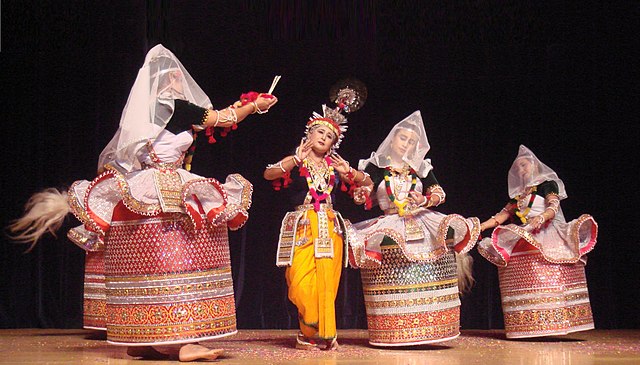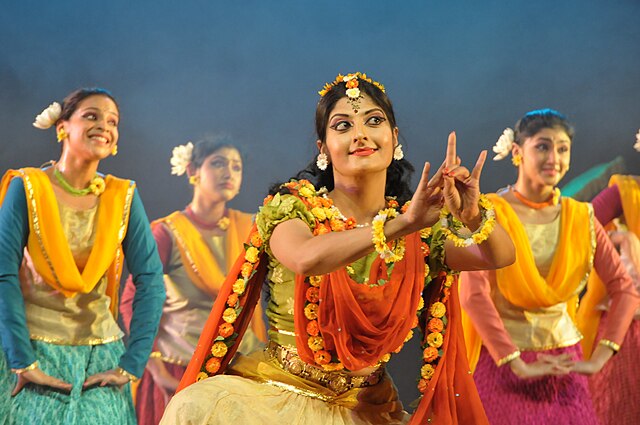Theatre of India is one of the most ancient forms of theatre and it features a detailed textual, sculptural, and dramatic effects which emerged in mid first millennium BC. Like in the areas of music and dance, the Indian theatre is also defined by the dramatic performance based on the concept of Nritya, which is a Sanskrit word for drama but encompasses dramatic narrative, virtuosic dance, and music. Historically, Indian theatre has exerted influence beyond its borders, reaching ancient China and other countries in the Far East.
Kathakali one of classical theatre forms from Kerala, India.
Rasa lila theatrical performance in Manipuri dance style.
Performer playing Sugriva in the Koodiyattam form of Sanskrit theatre.
Actor playing the role of Mohammad Bin Tughlak
The term Indian classical drama refers to the tradition of dramatic literature and performance in ancient India. The roots of drama in the Indian subcontinent can be traced back to the Rigveda, which contains a number of hymns in the form of dialogues, or even scenes, as well as hymns that make use of other literary forms such as animal fables However, Indian drama begins its classical stage in the 3rd-4th century BCE with the composition of the Nātyaśāstra. Indian classical drama is regarded as the highest achievement of Sanskrit literature.
A performance of the classical play Shakunthala with classical dancer Nirupama Rajendra (center) as the play's protagonist
King Udayana in Bhasa's Swapnavasavadattam Koodiyattam—the only surviving ancient Sanskrit theatre. (Artist:Mani Damodara Chakyar)
Famous Indian Dance Drama, Tantram by Srjan, Script written by Vanikavi







